Lung disease can cause shortness of breath, difficulty breathing, fatigue and inability to do physical work. But can you get disability for lung disease? Is it listed in the SSA’s rule books? What do you need to do in order to get disability benefits? Let’s find out.
Contents
COPD is a common lung disease that affects almost 15 million Americans. If you have been diagnosed with COPD or any other lung disease, you may be wondering if you are eligible for disability.
While the process can be complicated, it is essential to understand your options and what to expect. This blog post will provide an overview of how disability works for lung disease and what you need to do to apply. Keep reading to learn more!
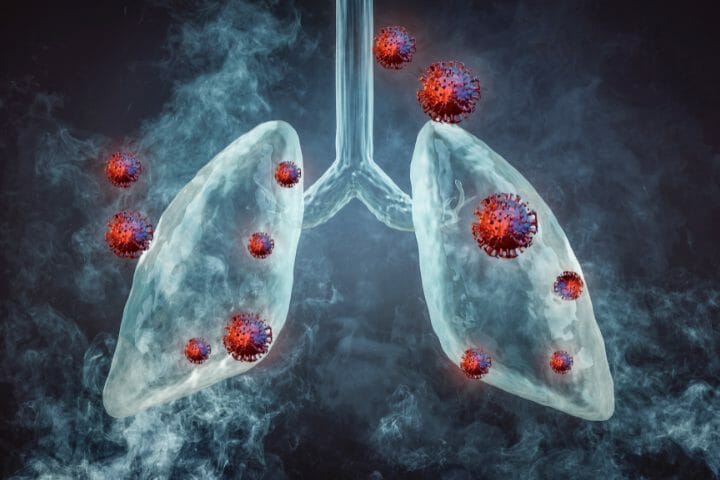
Can I Get Social Disability for My Lung Condition?
Yes, you may be able to get a disability for your lung disease. To qualify for disability benefits, you must have a medical condition that:
- It should last for a minimum duration of one year or result in death; and
- Prevents you from doing any substantial work.
Lung diseases can vary in severity, so it is essential to consult with your doctor to determine the expected course of your particular condition. If your doctor provides documentation attesting to the disabling nature of your lung disease, you will have a much better chance of being approval for their disability benefits.
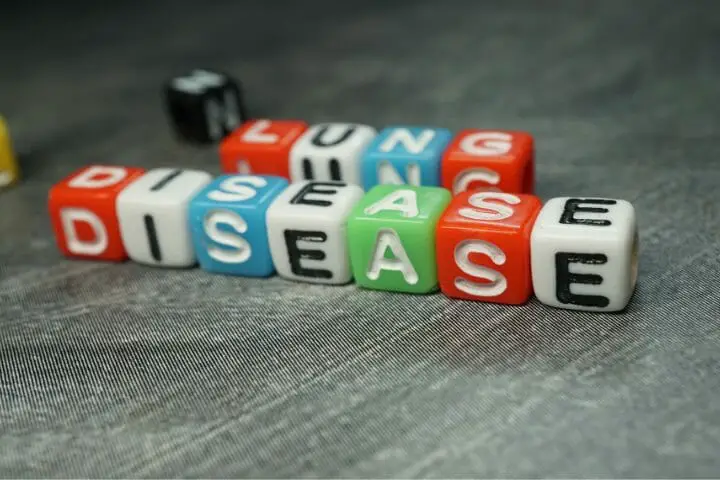
What Does the Social Security Administration Consider When Reviewing Claims for Disability claims?
The SSA will take a look at your medical history and other information to determine whether you eligible for benefits. In general, the SSA considers the following when deciding on your claim:
- Your diagnosis: the SSA wants to see that you have been diagnosed with lung disease by a qualified physician.
- Your symptoms: the SSA will consider the severity of your symptoms and how they impact your ability to work.
- Your treatment: the SSA will consider the type of treatment you receive and how it works.
- Your prognosis: the SSA will look at the expected course of your illness and how it is expected to affect your ability to work in the future.
You might also like to read: Can You Get Disability For Lymphedema?
Which Lung problems Are Given In The Social Security Disability Listings?
Several lung diseases can qualify a person for Social Security Disability benefits. Some of the more common disabling lung diseases include:
- Chronic pulmonary disease(COPD): This group of disorders blocks airflow and makes breathing difficult. COPD includes emphysema and chronic bronchitis.
- Asthma. This chronic lung condition causes wheezing, coughing, and chest tightness.
- Pneumonia. This is an infection of the lungs that can cause severe respiratory disorders.
- Tuberculosis. This is a contagious bacterial infection that primarily affects the lungs but can also affect other parts of the body.
People with lung diseases may be eligible for SSD benefits if their condition is severe. To qualify for benefits, applicants must have a lung condition that meets or equals one of Social Security’s official listings. Alternatively, applicants can demonstrate that their lung condition prevents them from doing any work that exists in significant numbers in the national economy.

Meeting Social Security’s Conditions for Respiratory Impairments
To qualify for disability benefits through social security, you must be able to prove that your respiratory disorder meets their specific criteria. This can be a challenge, as many diseases fall into a “grey area” and may not meet all requirements.
However, if you can prove that your respiratory disorder severely limits your ability to work, you may still be eligible for benefits. the SSA considers several factors in making their determination, including:
- The type and severity of your disorder
- Your medical records
- Your current treatment plan, prescriptions for supplemental oxygen or other medications
- Any other limitations or restrictions caused by your condition, such as heart problems, high blood pressure, anxiety, depression, lung cancer and diabetes
You can get these information in the SSA’s Impairments, section 3.00 Respiratory conditions. SSDI may be available to you If you suffer from any of the following disorders or other long-term lung or similar conditions:
- Adult asthma
- Emphysema problem
- Bronchiectasis
- Lung Transplant
- Respiratory failure
- Short-term respiration problems
- Cystic Fiber problem
- long Respiratory Disorder
You might also like to read: Can You Get Disability For Menieres Disease
The Social Security Blue Book Listings for Respiratory Impairments
Those who meet the criteria for a disability listing in the Blue Book of Social Security are immediately accepted for disability benefits. Like most other medical impairments, Respiratory diseases can be challenging to match the SSA’s Blue Book listing requirements. Respiratory ailments have specific listing requirements, some of which are outlined here.
- Refer to the SSA listings 3.02 related to chronic respiratory impairments
- Rating of 3.03 for Asthma
- Listing 3.04 for Cystic Fibrosis
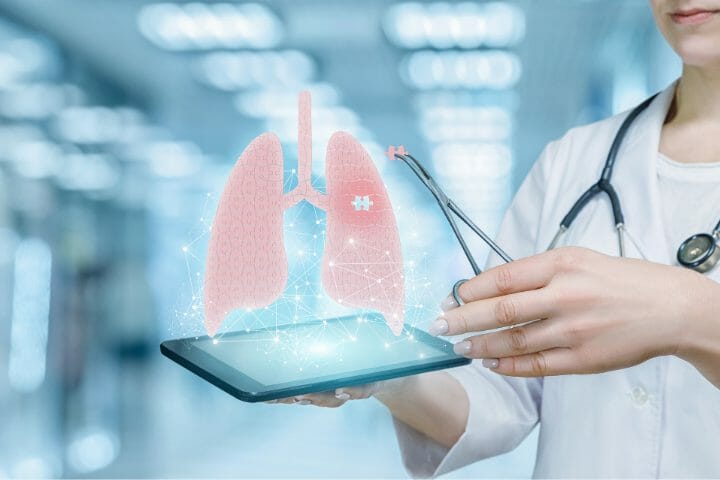
Blue Book Listing for respiratory impairments
Chronic respiratory diseases are included in rating of 3.02 for COPD. As long as your FEV1 (Forced expiratory volume, or the amount of air released in one second) is less than or equal to a certain quantity on the basis of your body ratio, you’ll be eligible for the listing.
According to Blue Book Listing I-B , an adult lady with height of 5’5″ and has FEV1 should be 1.35 or less is eligible for the listing. You will need to show the medical evidence for this through certain tests.
Spirometry data evidence can show that people with chronic conditions illness, characterized by decreasing lung capacity, may also match the criteria for this listing. In Spirometry test, your FVC must be more or less equal to numbers listed in the second table to match the listing’s standards. Social security will usually pay for your spirometry test.
Listing 3.02 represents those with lungs incapable of oxygenating their blood. The DLCO and PCO2 (pressure of carbon monoxidein blood arteries) are the three most essential test results here. (pressure of carbon dioxidein blood arteries).
If your symptoms are not severe enough or do not meet any of the listings mentioned above, you can also apply for disability through a residual functional capacity (RFC) process, where you need to prove that your symptoms still stop you from substantial gainful activity.
Listing for Asthma
The evaluation of chronic asthmatic bronchitis might be done under a rating of 3.02. It is possible to match the criteria for rating of 3.03 with persistent asthma attacks, defined as symptomatic cases that require hospital check-up three times per year. Even if the patient is taking their medication as directed, they must wait a minimum of 30 days between each asthma attack, and each attack must persist for a minimum of 48 hours.
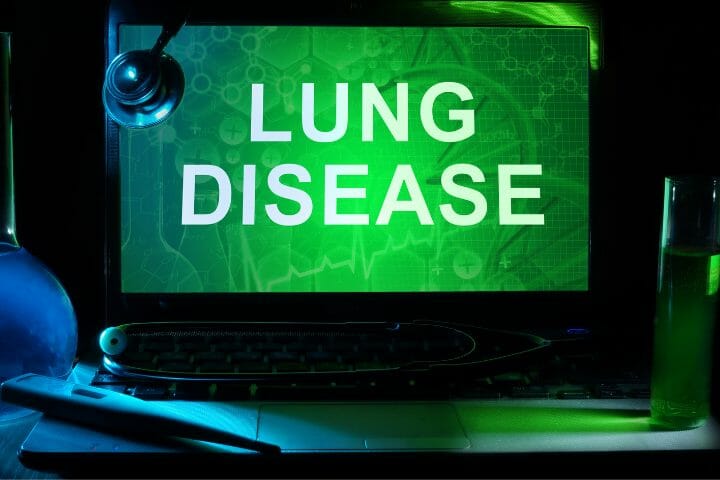
Can You Get Disability For Emphysema?
Yes, you can get social security disability for emphysema. The social security administration (SSA) recognizes emphysema as a debilitating condition that can make it difficult or impossible to work. If you can show that your emphysema is severe enough to prevent you from working, you may be eligible for Social Security Disability Insurance (SSDI) benefits.
To qualify for SSDI, you must first have worked enough years to earn enough “work credits.” Then, you must show that your emphysema is a “disabling” condition. The SSA has a specific definition of “disability,” which includes the requirement that your medical conditions must prevent you from doing any “substantial gainful activity” (SGA) for for a minimum duration of one year.
In determining whether your emphysema meets the SGA criteria, the SSA considers your age, past work experience, education and any other physical or mental impairments you may have. If you cannot do any work, you have done in the past or any other work in the national economy, you may be considered disabled.
You might also like to read: Can You Get Disability For Occipital Neuralgia?
Can You Get A Disability For Sarcoidosis?
There is no one-size-fits-all answer to this question as to whether or not to award disability benefits for sarcoidosis will vary depending on the individual case.
However, it is generally possible to receive disability benefits for this respiratory condition if it can be shown that the symptoms significantly interfere with the person’s ability to work. To receive benefits, claimants will need to provide medical evidence of their diagnosis in their disability application and how it impacts their ability to function daily.
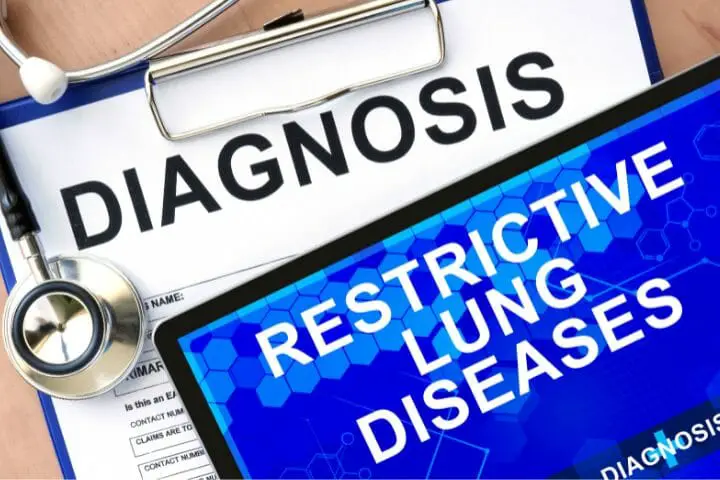
Frequently Asked Questions
Is COPD considered a terminal illness?
No, COPD is not considered a terminal illness. It is usually caused by Cystic Fibrosis (CF) or Bronchopulmonary Dysplasia (BPD). However, it is a long-term and progressive disease that can significantly reduce a person’s quality of life and premature death. There is still no cure for COPD yet but its treatment can slow down its effects improve symptoms.
How much time will it take to get a disability for COPD?
It can take a long time to get a disability for COPD. the SSA(SSA) says that it can take three to five months to get approval for their disability benefits. However, the SSA also says that some people may have to wait even longer to approve their benefits. If you have been diagnosed with COPD and cannot work because of your respiratory condition, you may want to consider applying for disability benefits.
Respiratory disability rating scale
The respiratory disability rating scale (RDRS) is a tool used by the VA to measure the severity of respiratory impairments. The scale consists of four levels, with Level I the mildest and Level IV the most severe.
Level I: No impairment. This Level includes those who have no trouble with one or more activities of daily living. The disability rating given here is 0% and it is considered that the person has no lung damage.
Level II: Mild impairment. This Level includes those who have a little difficulty with breathing and walking up and down stairs. The disability rating given is between 10%-20%.
Level III: Moderate impairment. This Level includes those who have difficulty walking for a moderate distance such as 100 yards. The disability score here lies between 30%-50%
Level IV: Severe impairment. This Level includes those who have severe difficulty in walking, going up to major problems in even taking a few steps. The rating goes from 60% – 100% here, 100% being for people who are completely bedridden.
Wrap Up
Your lung disease can severely impair your ability to be involved in gainful work. If you have any type of lung disease mentioned above, you need to get a diagnosis and start the process of applying for disability benefits as soon as possible. You should also consider getting a good disability lawyer to file your disability claim for you.
Unfortunately getting disability benefits may take anywhere between three months to two years from the date of the initial application, so the earlier you start, the better are your chances. Thank you for reading the article, we hope we have covered everything that you needed to know and if you still have doubts, write to us in the comments section.

